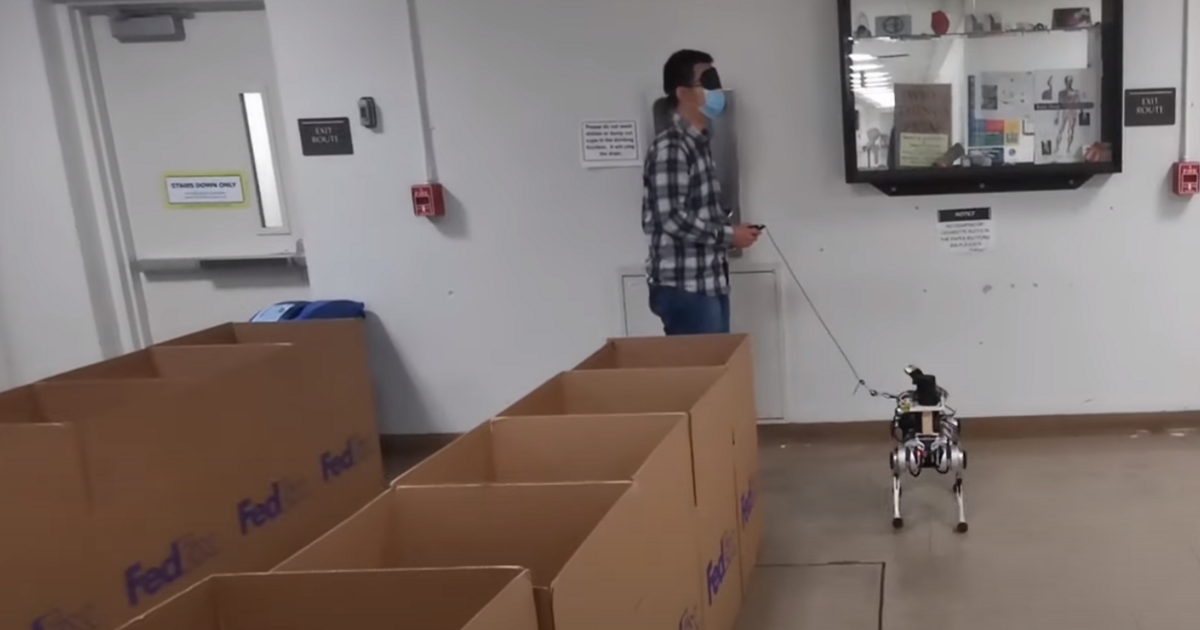Guide dogs, that is, trained dogs that help people move around their environment, have played an important role in society for several decades. This is because these highly trained animals have proven to be valuable assistants for the visually impaired, enabling them to move safely in both indoor and outdoor environments.
Why is robot better?
Researchers at the University of California Berkeley Hybrid Robotics Group recently created a four-legged robot with a steering wheel.
You can act as guide dogs.
This robot, revealed in a study previously published on the arXiv website, can help people navigate safely in an indoor environment without hitting objects, walls and other obstacles.
A well-behaved guide dog is usually selected and trained individually.
Zhongyu Li, the Hybrid Robotics Group researcher at the University of California, Berkeley who conducted the study, told TechXplore.
Additionally, the acquired skills cannot be transferred from one dog to another. Because of this, training guide dogs takes time and work and the process cannot be scaled easily. In contrast, the algorithms developed on an automated guide dog can be easily transferred to another robot.
Assured me.
The robot dog just got cheaper
Four-legged robots have become increasingly sophisticated in recent years. Many of these robots are becoming more expensive and easier to mass manufacture. Since four-legged robots are similar to dogs in both shape and size, they can be ideal alternatives to guide dogs and may be more easily accepted into society by humans than other robotic systems.
We decided to use four-legged robots as a guide dog to help the visually impaired. Our dog relies on a small four-legged robot called Mini Cheetah equipped with 2D LiDAR to detect the environment, a rotating base camera to track the position of the person being directed, a leash to direct people, and a force sensor on the leash that measures the human force exerted on the human.
Most of the previously developed systems for blind guiding rely on rigid robotic arms that recognize obstacles and help people circumvent them. In contrast, the robotic guide dog, pioneered by Lee and colleagues, is attached to a rubber leash that can either be taut (i.e. taut or taut) or loose. Instead of a rigid structure, the use of a handlebar allows more flexibility in joint movement and robot team positioning while navigating a specific environment.
It also uses a leash
In addition to creating the new electronic guide dog, Li and colleagues also developed a hybrid human-robot physical interaction model that describes the dynamic relationships between the robot dog and the human user during the process. Using this model, the researchers then developed an interactive design program that could switch between loose and extended handlebar modes to more effectively guide the human user in confined spaces.
For example, when the driver’s robot system is placed in a confined space, for example in a corner of a lane, the robot can first loosely release the handlebar. This allows the robot to change its position and reorient it without directly affecting the human posture. The robot can then extend the handlebar to guide the man through this narrow area.
He explained to me.
It has already been tested
Lee and colleagues evaluated the system they developed in a series of real-life experiments in which an automatic guide dog had to guide a blindfolded person to a specific location while avoiding accidents and collisions with nearby obstacles. The results of the tests were very promising as the robot successfully guided the participants to the desired location without collisions.
Recently, we were able to see Boston Dynamics’ robotic dog, Spot, here in Hungary with our own eyes.












































